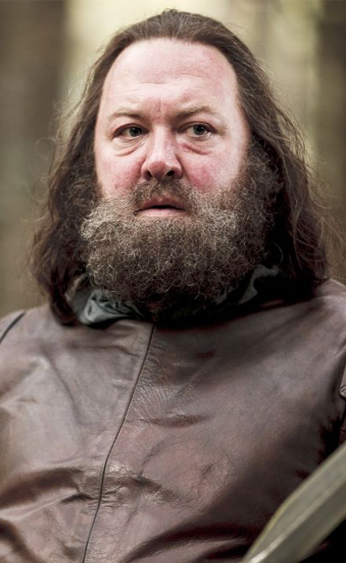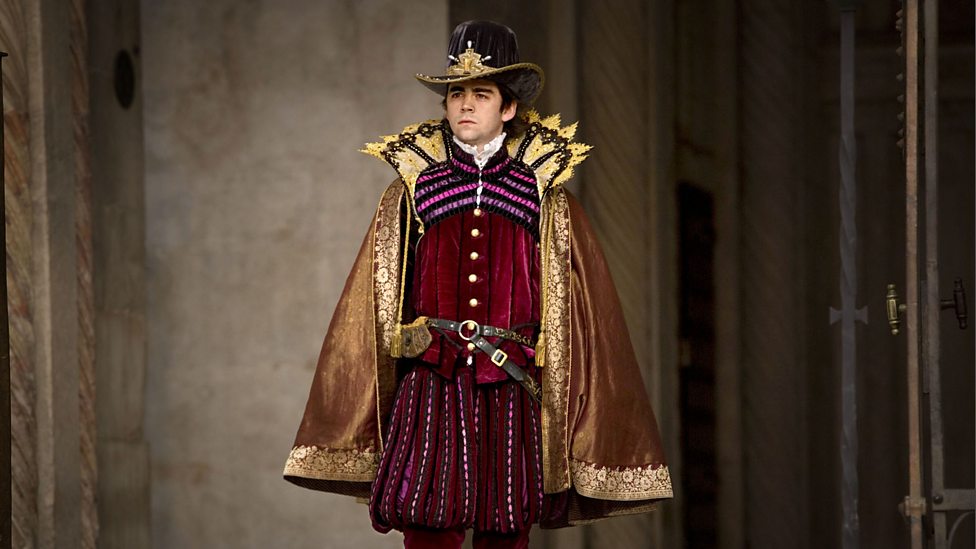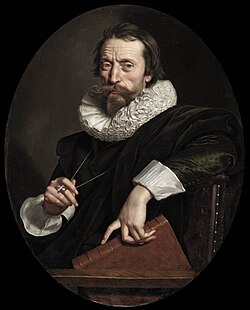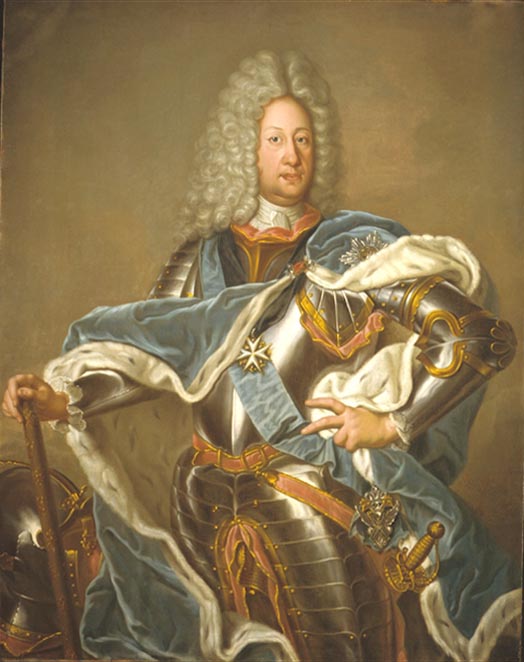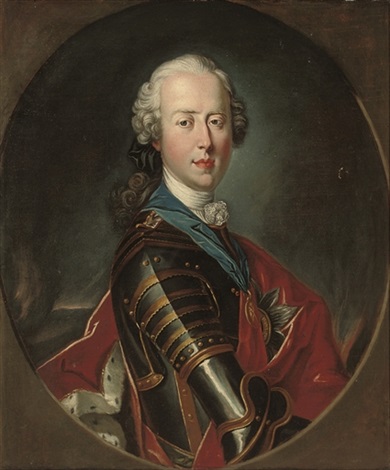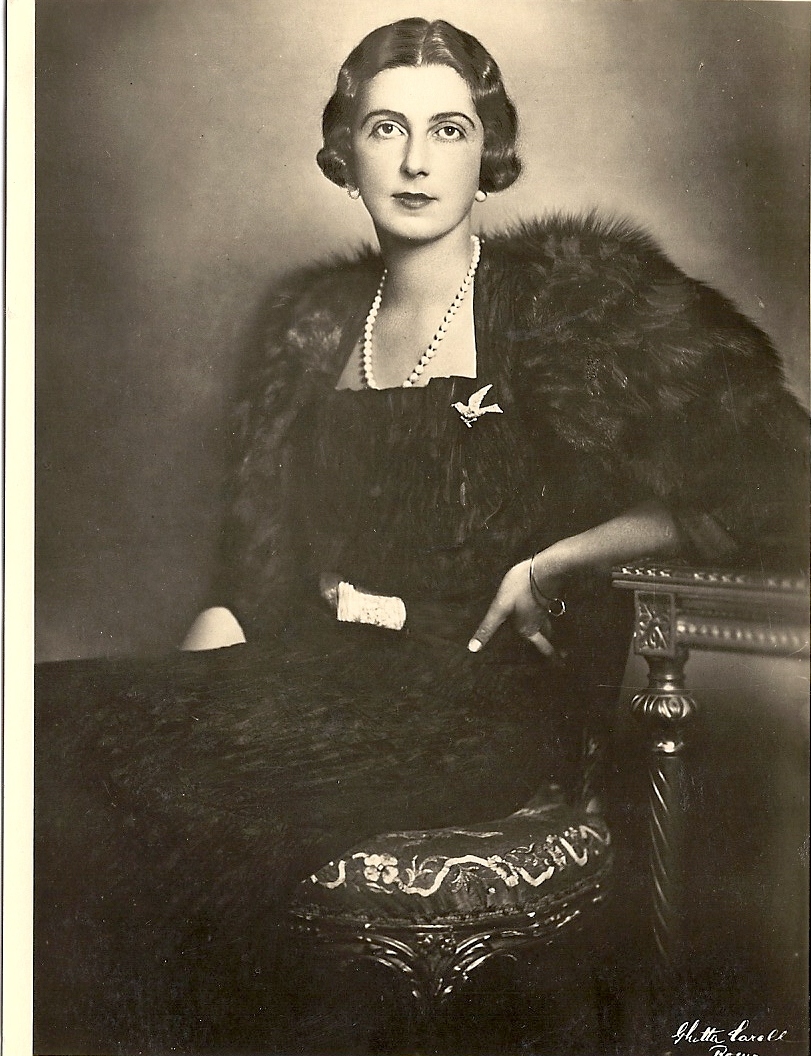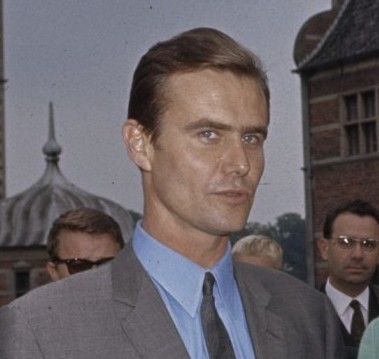[1] Frederick came to the throne in the middle of the First Italian War, where the French invaded and were defeated in 1498 by the League of Venice. When France invaded Milan the very next year with the backing of Venice, Frederick came to the aid of Milan, viewing the French invasion of Milan as a threat his own Kingdom. The war was going well for Frederick, but in 1501 Frederick's Spanish relatives invaded Naples, siding with France. Frederick was able to hold off the enemy, but Milan soon fell. Realising he had to adopt a more offensive strategy, he sent a fleet to Venice, capturing it and forcing the Republic to capitulate.
Luckily for Frederick, Spain and France had recently gone to war over how to split the spoils of war. Frederick offered a defensive pact to Spain against France, which was accepted. Neopolitian and Spanish forces defeated the French in Milan. Spain also launched an invasion into Mainland France, conquering Toulouse. France gave up on the war soon enough, and a peace treaty was signed in 1504
Spain would keep Milan, and Frederick would return the city of Venice in return for a large sum of gold.
In 1508 War of the League of Cambrai broke out, but Frederick did not join the war.
Frederick died age 60 of natural causes, leaving the throne to his only son, Ferdinand, Duke of Calabria.
[2] Born in 15 December 1488 in Andria, Apulia as son of the future King Frederick and his second wife, Isabella del Balzo. He held the titles of Duke of Calabria and of Apulia.
In January 1505, Ferdinand married, Princess Sibylle of Bavaria, from the house of Wittelsbach, she was the daughter of Duke Albert IV of Bavaria-Munich (1447–1508) from his marriage to Kunigunde of Austria (1465–1520), daughter of Holy Roman Emperor Frederick III. The marriage came two months before the death of her older sister, Sidonie, who was engaged to Elector Palatine Louis V.
Together the pair would have five children, before Sibylle's death in 1519 at the age of 29. Following the death of his first wife, in February 1521, 33 year old Ferdinand married 15 year old, Christine of Saxony (25 December 1505 – 15 April 1549) producing another sixteen children.
There was talks of finding a third wife, with rumoured proposals to Mary, Princess of England or Archduchess Eleanor of Austria, (daughter of Ferdinand I, Holy Roman Emperor and Anna of Bohemia and Hungary), until his own death at the age of 63.
His ruling was seen as fair and just, supporting the Papal State financially against Venice, while holding a strained peace against France to the West. His support of Pope Leo X (1513-1536) and his successor Pope Leo XI (1536-1553 OTL Giovanni Salviati, who was Leo X nephew) gained him the title of "Blessed King Ferdinand, Holy Servant of God"
[3] Ferdinands grandson, Sebastiano, was quite impressive for a single reason - he managed to rule for a prolonged period and fend off several significant attempts to depose him whilst simultaneously being one of the most unliked monarchs in the history of Naples. Keen to delegate his responsibilities to his relatives and council, he rarely left his chambers, spent an increasing amount on clothes, wine, food and prostitutes, reportedly abused his slaves and some claim he murdered his wife (from an arranged marriage, it was common knowledge that they hated each other) when she attempted to leave him with their only son. At this point, he sent his son to be brought up by priests and passed a law that states his son must not set foot in the palace until he, Sebastiano, had died and walked into the embrace of God. Even attempted intervention by the Pope failed to sway him from being an awful person - perhaps the only thing that put down the attempted depositions was the fact that he had delegated so much power to his council and military leaders that they feared having the power removed by any subsequent ruler - and with his death in 1581, his son having vanished off the face of the kingdom after his banishment to a monastery, there was a host of aunts, uncles and cousins to pass the crown to, eventually being passed to his brother, Nicolo.
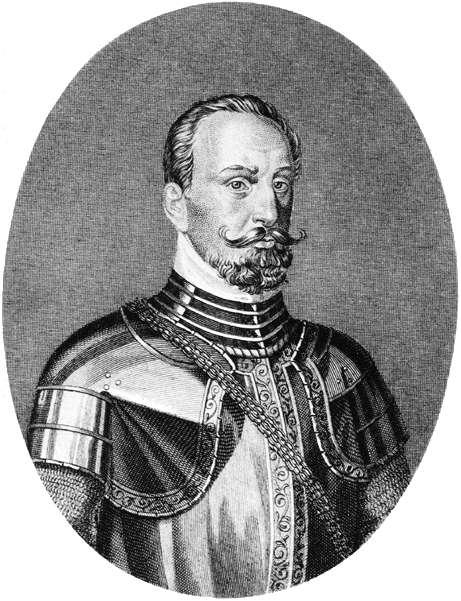
[4] As the younger brother of Sebastino, many were worried that Nicolo would turn out to be like his brother, so the first thing Nicolo did when he was crowned was found a new house for himself, the House of Naples. When he inherited the throne, the Royal coffers were drained and the country was heading towards a economic crisis.
Nicolo decided to reinvent the tax system, and cut unnecessary costs. This made him unpopular with his nobles, some of whom conspired against him, but nothing major ever came of it. Nicolo sold a number royal palaces and wore mostly plain clothes. Despite this, the economy had made a full recovery by 1593, and now Nicolo was looking to expand.
The Neopolitan colonies of Brasile del Nord (meaning North Brazil, stretches from the Amazon to modern day French Guiana) and the Bahamas, defending by a grand navy that Nicolo had built.
In 1600 Venice and Naples went to war over control of the Mediterranean. When Spain did not defend Naples from the Venetian aggressors, Nicolo was very angry, but did not show it to the Spanish, fearing possible backlash from the Habsburgs. In 1601, the Treaty of Venice was signed. The war was inconclusive, and was considered a waste of time, even by Nicolo himself. Regardless, Nicolo remained one of the most celebrated and popular Kings of Naples.
In 1607, Nicolo died of Cancer age 66, leaving the throne to son, Prince Frederick.
[5] Frederick, was born in 1571, son of Nicolo and his wife, Elisabeth of Austria, daughter of Maximilian II, Holy Roman Emperor, and Maria of Spain. This marriage was arranged as a Habsburg attempt to influence the running of Naples.
Growing up during the reign of his eccentric uncle, Frederick, would be educated by his father, regarding matters of state and foreign politics.
At the age of ten, he became heir following his uncles death and his father’s succession and would continue being tutored by his father and shadow him.
His marriage was arranged by his father to Maria de’ Medici at the Palazzo Pitti of Florence, Italy, the sixth daughter of Francesco I de' Medici, Grand Duke of Tuscany, and Archduchess Joanna of Austria.
The death of his father from cancer and Frederick succession, came at the age of 36 and his preparation set him in good stead, he was able to continue his father's strong economy policy assisted by colonial trade, helping to assist with the Navy and Army.
When Maria’s uncle, Cardinal and Grand Duke Ferdinando II of Tuscany died in 1609, King Frederick, claimed her father’s throne on behalf of her, uniting the two nations and elevating the later nation to a Kingdom.
To placate, Pope Julius III and his Papal State, who now found its self sharing borders with the Union of Naples and Tuscany, King Frederick would pledge loyal allegiance to his Holiness, signed a non-aggression agreement, along with a yearly "loyalty tax," a tax used by the Pope to invest in its army and navy.
His death in 1639, at the age of 68, came following three years of declining health. He was succeeded by his son, Prince Maximillian.
[6] Maximillian was the third son of king Frederick and the only one to survive untill adulthood. He was born in 1598 and named after his maternal grandfather emperor Maximillian II. By the time Maximillian was crowned king of Naples and Tuscany his grandfather's branch of the Habsburg family had died out and his distant relative Ferdinand III sat on the imperial throne. Ties with the Habsburgs remained strong nevertheless as Maximillian had married Ferdinand's sister Maria Anna (b.1610).
Wheras Italy had remained firmly catholic, Europe north of the Alps was ravaged by decades of religious warfare. The imperial forces had met with initial success but after more than 20 years it became apparent that the Habsburgs were fighting a loosing war. Backed by the French and other foreign powers protestant forces sacked Vienna in 1638, but the war was far from over. By 1640 most of the HRE was in protestant hands and church lands were distributed to protestant lords, including the archbishoprics of the Electors of Trier, Cologne and Mainz. With most of their lands occupied and the Electoral system of the HRE shattered the situation for the Habsburgs seemed dire.
In 1641 King Maximillian intervened on behalf of his brother-in-law emperor Ferdinand III and landed with his troops in Habsburg Croatia in an attempt to liberate central Europe. He marched northwards capturing Vienna before the end of the year and continued marching westwards towards Bavaria. The renewed warfare was a catastrophe for the local population with between 33-50% of the inhabitants of Lower and Upper Austria being killed during the course of the war. The catholic forces were moderatly successful and reached Franconia by 1643 but than the luck of the House of Austria ran out. Ferdinand's brother Leopold Wilhelm was killed on the battlefield before the emperor himself succumbed to fever, leaving the Habsburg family without adult males to take the crown.
In the Treaty of Passau Maximillian promised to defend the Austrian lands in exchange for Habsburg support for his claim to the imperial throne. With the electors of Trier, Cologne and Mainz living in exile and the Habsburgs at his mercy the election was a mere farce. Maximillian was elected emperor despite the fact that non of the electors who voted for him actually controlled their electorate (not even the Habsburgs as Bohemia was occupied by protestant troops).
To further cement his rather weak claim to imperial authority Maximillian left his troop in the hands of his generals and traveled to Rome to be crowned emperor by the pope (a tradition abandoned by the Habsburgs over a century ago). Both Maximillian and his father Frederick had been financially generous towards the pope but this came with a price. In the last decades papal economy and building projects had become increasingly dependent on those Neapolitan taxes. Both overland and naval trade became dominated by merchants from Tuscany and Naples and the minor lords of the Romagna soon cared more for the opinion of the Neapolitan kings than the pope's.
Despite the initial success the Neapolitans enjoyed in Germany the war once again swung in favour of the protestants. Not long after his return from Italy Maximillian and his allies were forced back towards Vienna. Tired of the ongoing war Maximillian once again left for Italy leaving the war to his generals and the Austrians, who felt rightfully betrayed by the emperor, who had pledged to defend their lands.
After almost three decades and the second sack of Vienna the Austrian forces of the young Archduke Ferdinand surrendered in 1646. In the Treaty of Ingolstadt the Austrians and Neapolitans accepted the loss of Bohemia and the independence of the German states not part of the Habsburg domain. The treaty was an utter humilitation for the House of Habsburg and showed that Maximillian was utterly uninteressested in fighting for the Austrian cause.
The second half of Maximillian's reign was rather uneventful. The center of power slowly moved to the north as the rich Tuscan lands became increasingly important for the finances of the dual kingdom. Maximillian died of throat cancer in 1651 after 12 years as king and 8 as emperor. Leaving his wife and their minor children. His reign is regarded as one of the most succesful in Italian history, wheras it is seen as a historical low point by German catholics.
He was succeeded by his daughter, Eleanora Maria Catalina of Naples.
[7] The Princess Eleanora Maria Catalina of Naples was 15 when her father died. A minor by technicality, she was placed under a regency of her cousin, the Prince Francesco of Naples, and left in the care of her mother, Maria Anna,
Archduchess of Austria. Raised prior with the knowledge that she would eventually be replaced by a son of her mother and father (her mother was just 30 at her father's death, his second wife after a fruitless marriage to his first cousin, the Princess Louise Margaret of Savoy, who died in 1632, at age 35, after 20 years together. Maria Anna, his second wife, gave birth to Eleanora in 1636. 7 children followed, 3 sons, 2 daughters and a stillbirth in 1651, two days before his death. The sons, Princes Ferdinand, Frederick and Niccolo of Naples, both died in 1645, of smallpox, but the Emperor had been confidant that a new son would follow. The stillborn child in 1651 seems to have been another daughter.
The new Queen Eleanora had been raised from birth with the goal in mind of marriage, specifically to the
King of France. France, Maximilian had hoped, would be a useful ally against the descendants of the Hapsburgs, already in the 1650's aiming for the Imperial Throne again, and as part of this alliance (due to their belief that a union with Naples was imminent) the French had placed their support behind the
Elector of Bavaria in order to block the
Archduke of Austria, Joseph Gonzaga, from the Imperial Throne. The play worked, but in 1654, Eleanora was forced by her cousin to formally break her betrothal to Francis III of France, in part because her cousin planned on marrying her himself. Maria Anna, however, was able to block the match when, later that year, she produced her former lady-in-waiting, a Lady Ippolita Orsino, to testify that Prince Francesco had married her in 1649, and that they had a son together. The general consensus had been, at the time, that Ippolita was his mistress, but with the
Queen Dowager of Naples supporting her and documents with his signature proving, to many, the marriage was real, the Pope himself called upon Francesco to take his wife in. Their son, Prince Sebastian, died in 1655, and they would have no surviving children before the Lady Ippolita's death in 1660, probably of poisoning.
However, free from any major commitments in terms of marriage, with the
King of France safely married to the Princess Julianne of Lorraine, Eleanora began to play her options, hoping to emulate Elizabeth I of England, who had rejected the famed King Sebastiano with the phrase "England's lion shan't marry the Italian Pig". Eleanora, however, found that, with the death of her mother in 1658, and the marriage of her sisters into various royal houses, she was quite lonely. She met her future husband, Prince Henry,
Duke of Gloucester, in 1658, at the wedding of her 15 year old sister, the Princess Maria Catalina of Naples, to Henry's elder brother, the newly installed
King of England. Henry, 4 years her junior, was not the English Prince many suspected she would eventually marry, but sparks flew, and when they met again for the marriage of Eleanora's other sister, the Princess Niccola Margarita of Naples, to the
Duke of Parma, in 1660. At 24, Eleanora was fast becoming annoyed by the various proposals thrown her way, in particular by Prince Ferdinand of Trastamara, a descendant of Ferdinand II of Naples, who was a Prince by technicality, but in 1660 was more known as a hanger on of the court. Thus, she married the Stuart Prince in 1661, and in 1662, had the first of their 8 children, all surviving.
Eleanor only truly began ruling around this time too. Previously having played off the misogyny of her advisers, in 1663, she restructured the court, removing almost 30 seperate men who were advisers, not by merit, but by blood. In particular, the man responsible for the Economics of Naples, one Lord Jorges Farnese, had run the finances of the country into the ground, which was able to be righted when he was replaced by Thomas Francino. The trouble was, however, that Eleanora continued to face massive pushback from her councilors, and in 1665, had to form a formal parliament, in order to try and condense the bureaucracy of the government.
In 1670, Naples went to war against the last Italian holding to not be under their control, the
Duke of Parma. With the death of her sister in 1666, in childbirth with the second of two daughters, the
Duke of Parma had married the
Archduke of Austria's niece, Margaret Farnese, and in 1667 had begun a series of attacks against the Italian holdings of Naples. Eleanora thus, unhappily, sent her husband to deal with it, when she was 3 months pregnant with their 8th child. Henry Stuart would defeat the Duke in battle in 1671, but returned home wounded, and despite nursing by his wife and the care of the best doctors, he died of an infection, leaving his wife pregnant and alone. Eleanora grieved heavily.
Eleanora suffered giving birth to her final child, but managed to pull through of this illness, managing to live past them. At age 36, she was young enough to consider remarriage, and in 1675, there was talks of her marrying her former betrothed, the
King of France, with the understanding that she would abdicate her throne of Naples to her heir. Eleanora seems to have considered it, but declined, preferring to raise a monument to her husband in 1677. This monument would, however, be the death of her.
in 1678, Eleanora's other sister, the
Queen of England, died in childbirth with her 13 child. The
Queen of Naples, distraught, was cautioned against attending the funeral, and instead (in part due to fears that her quick weight gain after the death of her husband would cause health issues) she was perscribed long walks to combat her grief. She took them through the building site of the monument, with her nieces (Maria and Isabella of Parma) hand in hand, lecturing the girls as to the evils their father had committed. However, in June of 1680, she walked alone, and was struck by a falling hammer. The wound was grave, and in July, she died of an infection, much like her husband had done 10 years earlier. The monument, a massive statue of Henry Stuart and Eleanora of Naples together, was where the two were buried, under the stones. She was succeeded by her son, Henry.
[8] The oldest son of Henry and Eleanora, Henry the 1st is said to have done only three good things; marrying his cousin, Maria of Parma and thus uniting all of Italy but the Papal states (which were effectively dependent on the Kingdom of Naples), fathering two heirs, and letting his wife run things.
It did not always seem that way, and as an heir and during his first year he seemed bright and competent. The problems began in 1681 when he was thrown from his horse and treated with opium for his broken leg. Though it was not understood at the time, Henry became an addict and spent more and more time in a stupor until his fatal overdose, by which time few mourned.
Throughout this time, his wife Maria took on more and more of the the royal duties, most importantly and effectively arranging for her two brothers in law to join the church and eventually becoming successive Popes. As Duchess of Parma in her own right after 1683, she encouraged the loyalty to her personally and to her children, doing much to set the dynasty up for further success.
Henry was succeeded by his brother, Ferdinand.
[9] Maximillian was the younger brother of Henry I. Maximillian was notorious for being rowdy, brash, and stubborn. Although this made him unpopular with some, it did seem to help him as King, seeing that he never backed down from a fight.
In 1700, Charles II of Spain died, starting the Spanish War of Succession.
Maximillian took up arms against the Bourbons in the name of the Habsburgs. He immediately launched three invasions: an invasion of Sardinia, an invasion of Savoy and Milan, and an invasion of Portuguese Brazil. Sardinia was quickly annexed into his Kingdom after only 2 weeks of fighting. Milan fell quickly too, with assistance from the Austrians, while Savoy held out. Brazil was soon unified under the banner of Naples.
However, a counter attack was launched in 1703 by France and Savoy. The fighting was bloody, and soon the Neapolitans were pushed out of Savoy. When Milan fell in late 1704, Maximillian's own son Henry, charged with the defence of Parma, betrayed his father and joined the French. Prince Henry lead many attacks into Parma and Tuscany. Maximillian's court of advisors pleaded with him to exit the war, but the King refused. He knew if his King would ever be great, he must win this war. It seems God was on his side, for in the crucial siege of Florence, when all hope seemed loss, Maximillian and an army of 42,000 rode into battle, crushing the invading Savoyard forces. The momentum generated from the famous battle created enough force to force the Savoyard and French forces out of Italy. By 1708, Savoy had fallen and was occupied by Neapolitan troops. Prince Henry fled, and took refuge on a little island in the Caribbean for the rest of the war.
The Italian front remained a stalemate until the end of the war in 1713, with Prince Charles Habsburg being crowned King of Spain.
In the Treaty of Naples, Maximillian gained Savoy, Milan, Sardinia, and Portuguese Brazil. The Kingdom of Naples now controlled most of Italy, all it was missing was a collection of minor states in the North.
Maximillian convinced the Italian states to join his Kingdom, all except Genoa and Venice. Maximillian quickly defeated the two Republics, annexing them, including the Venetian colonies along the Balkans, as well as Greece. Following the unification of the Italian States, the Kingdom of Naples was renamed the Kingdom of Italy.
Maximillian died a few years later of natural causes at the age of 60, leaving the throne to his eldest surviving son, Prince Frederick of Italy.
[11] King Frederick VI of Italy was Maximilian II's third son, the product of his second marriage to Isabella Stewart,
Princessa de Bari, the granddaughter of Eleanora I of Naples and the daughter of Frederick Stewart,
Prince of Bari, who had first been made
Duke of Bari by his mother at birth, and later
Prince of Bari by his brother, Henry I of Naples. Prince Frederick, the youngest son, had married Catherine Marie d'Angouleme, a cousin of King Francis III of France, in 1685 (on his 18 birthday), and from there had had three daughters before his death in 1692. The first
Princessa de Bari, Gregoria Maria Stewart, who had married Maximilian's eldest son by his first wife, Henry Stewart,
Prince of Parma (the title his father had given his son as an honourary title), in 1700, at the age of 14 to his 16. The marriage had lasted 3 years, before her death after miscarrying her first pregnancy. The next
Princessa de Bari, Eleanora Henrietta Stewart, enjoyed the use of the title for only 3 months, during which time she was severely ill. The young woman, dying in 1703 at the age of 15, had been betrothed to the English
Duke of Clarence (the grandnephew of Eleanora I of Naples), who would instead marry the eldest daughter of Maximilian II of Italy, the Princess Maria Theresa of Italy. Thus, Isabella Stewart, youngest, and posthumous, daughter of the
Prince of Bari inherited her title in 1713, at the age of 13 herself, within weeks of her inheritance forced to marry the
King of Italy, who had recently been left single by his first wife, Anna of Bavaria.
Isabella Stewart, thus, was only 15 when her first and only son, Frederick, was bord, and seems to have been physically ruined by the birth. A small woman in her maturity, she was unable to walk for months after the birth, and did not concieve a second time. Upon her death in 1710, she was a sickly woman of 20, and her husband wrote sadly to his eldest son in exile, who would die in 1715, probably of poisoning by his second wife (he had married the Princess Anne Jeanne d'Orleans while allied with the French, and she would later be convicted by the
King of France himself for attempting to poison his wife in hopes of becoming
Queen of France herself) that "Isabella of Bari died an old woman in her youth, while I remain young in my great age". Maximilian, then aged 47, was a bit of a dramatic letter writer, who later described his third and final wife, Clara Gonzaga of Austria, as the love of his wife to a friend, after 3 weeks of marriage. He would, in that same year, attempt to divorce her to marry her aunt, Therese-Marie of Savoy, a potential heiress (she would, within a year, be displaced by her elder brother's miracle son, born between himself and his 41 year old wife of 15 years), in order to extend his borders, but the
Queen of Italy proved pregnant, and instead Therese-Marie would marry Louis VII,
Elector Palatine.
Frederick VI, during all this time, grew up in the household of his aunt, Catalina of Naples (as the daughter of Eleanora I of Naples, she was not given the right to hold the title
Princess of Italy), who by 1705, was a 38 year old spinster, and the only one of Eleanora I of Naples' children not to marry. Instead, Catalina devoted her life to her nieces and nephews. Made independent by her mother's will, which left her a fortune and use of certain lands and towns throughout Italy, Catalina had, for a time, travelled through Europe with various relatives, spending time in England and France before the war began. However, in 1686, she settled back at court, and for her large intelligence, agreed to take on the task of raising her brother's growing brood of children. It was she who warned Maximilian that his eldest son was growing too ambitious, she who nursed his second son by Anna of Bavaria during the smallpox that eventually took himself and his twin sister, Eleanora of Italy. And it was she, in 1705, having recently seen her last charge off to England to replace the
Princessa de Bari, who took the young Frederick into her care in 1705, and who would raise him in full once his mother succumbed to her weak health.
Young Frederick, in 1712 granted a sister in the form of Isabella of Italy, and later a brother with Francesco,
Duke of Milan in 1715, was a melancholy child. Sure that he had killed his mother, he was strongly pious, and clung to his aunt, to the point of worry for her. When his third younger sibling, the Princess Theresa of Italy, was born and died within a month in 1717, he held his own, childish funeral in the royal nursery, to which Catalina found disturbing. However, in 1718, when he became
King of Italy, he showed less grief for his father. Finding the grief of his stepmother excessive, he complained that the mourning of the court of excessive, and cut it early when, 3 months after his father's death, his birthday celebrations were met with a demand for bright colours.
He married in 1728, at the age of 23, to the 17 year old Princess Guilia of Trastamara, great-granddaughter of Prince Ferdinand of Trastamara, who had courted Eleanora I of Naples. The marriage was not a love match, despite the bride's beauty and obvious devotion to her husband. Instead, the
Queen Dowager of Italy had organised it, with the King's permission, after his attempt to marry Alfonsina de Medici, an Italian noblewoman of dubious (read: illegitimate) origins was blocked by the Parliament, who had it in law that a
King of Italy must marry a woman of undesputablely legitimate heritage. Frederick took this surprisingly well, positioning Alfonsina as his mistress and granting her the title
Princessa de Taranto. Thus, when their first child, Riccardo Taranto (as his surname was given) was born, he became heir to that title and those lands.
This, obviously, strained the King's marriage to the new Queen Guilia, but the King simply chose to ignore it, focusing instead on finishing the job his father had begun, which he saw (in simplicity) as breaking France). Thus, in 1730, with his wife pregnant for the first time, he invaded France's ally, Savoy, calling Spain to their side, along with Bavaria and England. None of these allies came. Spain, still recovering from their Succession War, refused to break their French treaties, while England's King wrote to Frederick that the attack was madness. Bavaria, the least involved of the three alliances Frederick sort, simply didn't respond, and removed their main ambassador from his court. Thus, it was the might of Italy against France and Savoy, and that thus began a 10 year war.
No one could have seen the outcome, but Italy did win, if only in the broadest sense. By 1740, they held Savoy, and the Duke did swear his allegiance, but it was at a high cost, and Frederick, against his wishes, was forced to send his sister to France to marry the
Duc d'Anjou, while brother was married to the Princess Marie-Christine de Berri, a woman in her late 30's, who had previously been a spinster. To have his siblings forced into French matches infuriated Frederick, who had to be restrained on the day the French Marie-Christine arrived to her new husband, who took the match much better than his brother, managing to father a few children with her and generally enjoying her company.
Frederick's policies, thus, became more domestic, focusing on rebuilding the Italian economic situation, causing friction between himself and his economic minister, Thomas Orsino. The old man had held the position since 1701, and had funded multiple wars. But now, as his career looked to be ending, the new King was questioning his choices, and changing things up too much. The two would remain feuding, with the permanency of the Ministerial position ending after Orsino's death in 1748.
Frederick would die in 1757, aged 52, in the arms of his mistress. It's suspected that the man had a heriditary heart condition from his mother, but it's equally likely that he was just a man who had lived hard and died hard. War hadn't been good for his health either, and he'd had death scares in 1743, 1747 and 1750. His death was quietly mourned, and if he hadn't respected the rites themselves for his father, his wife and heir, Eleanora, did, keeping in backs and greys for 12 months. His legacy hung in the balance. Would Italy hold Savoy? Would his memory be strong?
[12] The only child of Fredrick and Queen Guilia to reach adulthood and only eighteen when she inherited the throne, Eleanora Maria Catalina grew up happily among her numerous half siblings by Alfonsina de Medici, whom she adored, in contrast with the mother she saw only on formal occasions. This served her well, as those half siblings mostly grew up to be her most loyal supporters and confidantes, filling many important posts in government and as well as unofficial posts. Notably, her half sister Isabella ensured the loyalty of new Duke of Savoy as first his mistress and then his wife. It also gave her a fairly realistic view of the world, for unlike many royal children she grew up in the give and take of a fairly normal family.
"Mama" Alfonsina was instrumental in another way, introducing to her half nephew Alberto De Medici, younger son of the Duke of Florence. Eleanora proceeded to seduce and then marry the two year younger Alberto. The result was a couple who were devoted to each other and who produced four children who lived to adulthood.
Extremely intelligent and fluent in six languages, she was drawn to enlightenment thinking; becoming a patron of Voltaire and correspondent with the likes of Benjamin Franklin and Mary Wollstoncraft. Being careful to avoid warfare, she invested the peace dividend into education, trade, and the arts. As a result she her reign is remembered as a golden age much like Elizabeth Tudor's is in England.
This did not always sit well with the Church, who lost influence in education as more government schools and Universities opened, and the more conservative nobles, who were losing influence to the growing middle class but with whom her marriage buttressed her position.
Dying suddenly of a heart attack three years after her beloved Alberto, she was succeeded by her child, Crown Prince Frederick of Rome.
[13] The eldest son of Queen Eleanor and Prince-Consort Alberto, Frederick, was the first member of the new house, Florence De Medici, his families branch of the De Medicic, family that have branches in Scotland, the Papal State, Spain, Bavaria and Austria.
Born in 1764, Frederick was extremely interesting in keeping not only mainland Italy but also it's islands safe, so became active in the reformation of the navy, stating that while his mother was worried about the arts, he will protect the water's.
He personally visited the Island of Corsica, in where he discussed plans with Corsican Admiral Napoleone di Buonaparte, who had the very much similar mind set as Frederick, in times of peace, great men prepare for war.
In 1780, he married fellow 16 year old, Duchess Maria Carolina of Savoy (17 January 1764 – 28 December 1787) She died of Smallpox aged twenty three, leaving no heir.
In 1788, he married, 16, year old, Maria Theresa of Spain (6 June 1772 – 13 April 1805), daughter of Prince Ferdinand of Spain and Maria Carolina of Austria, whom gave him 11 children, before her death during the stillborn birth of what would have been their 12th.
His accession at the age of 39, followed years of securing the front line settlements to the north and naval towns in the Mediterranean Sea, tension was building in Europe with Britain, France, Prussia and the Ottoman Empire on one side, Spain, Bavaria, Austria and Russia, on the other.
He would declare Italy neutral in this tension, along with Portugal, Switzerland and the Scandinavian Empire, but many politicians and members of the public, including Admiral Napoleone di Buonaparte, felt that Italy's neutrality would be violated by one side or the other when "havoc" is cried and the dogs of war, are let slip.
However while an uneasy peace continued in Europe, Frederick collapsed during one of his domestic and foreign politics meeting, and was pronounced dead immediately, the autopsy following his death, at the age of 46, should that the King suffered from a severe cardiac tumor, which lead to an early heart attack, hereditary passed down to him via his mother.
He was succeeded by his son, Maximillian.
[14] The second son of King Frederick VII, Maximillian inherited the throne age 17, already married to Marie Antoinette of Habsburg Spain. Maximillian was well known to be highly argumentative and overly proud, despite very little promise or achievement.
Maximillian truly believed he was a genius and a great leader, capable of besting Napoleon. Soon after coming to the throne, he launched an invasion into France. Napoleon had recently launched an invasion into Russia, so most of the troops were away in Russia. Despite this, Maximillian insisting on using his own plans instead of his capable generals lead to the invasion being a total failure. France countered and laid siege to Genoa and Milan. Both these cities were saved, but at a terrible cost. Maximillian's armies had been destroyed, now he had only half of his invading force fit to fight. Maximillian called off the invasion, and fought the rest of the war with a purely defensive stance. When the war was over, Maximillian claimed that his invasion of France had brought the French to their knees, allowing the other coalition forces to finish Napoleon off. Nobody believed him, not even his own people.
In 1821, Greece rebelled against Italy. Italy was severely weakened from fighting against Napoleon, and independence was achieved later that year by Greece with help from the Ottomans, British, French and Russians. Maximillian, utterly humiliated from this loss, decided to plan an invasion of the Ottoman Empire to exact revenge and prove himself.
In 1828, when war broke out between the Russians and the Ottomans, Maximillian backed the Russians. Maximillian, having learnt from his last two wars, decided to leave the grand strategies to his advisors and generals, and Italy actually performed very well in the war. When the war was won, Italy had annexed Crete and Cyprus, and made Albania into a protectorate of the Kingdom of Italy..
Maximillian III was deposed in 1848 during the Revolutions of 1848, where he was replaced by Prince Franz Ludwig of Austria.

